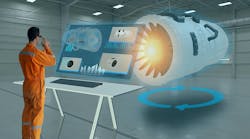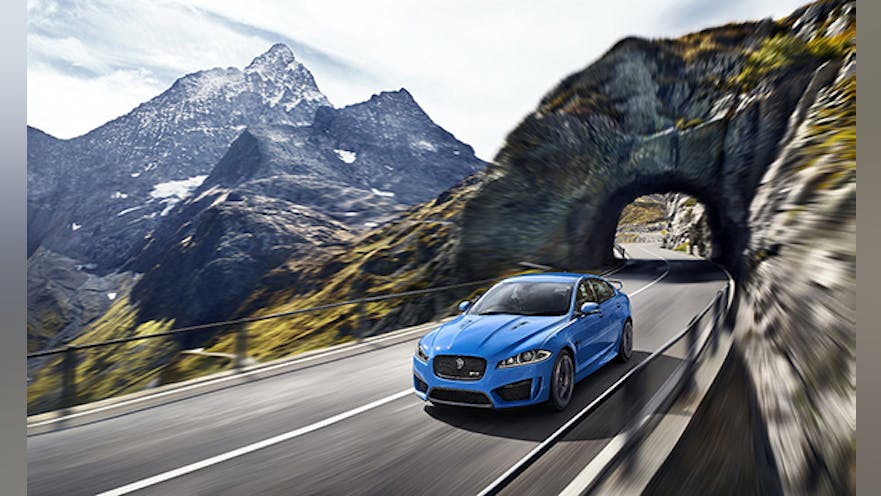Manufacturing system coordinates automation and valve-gate nozzle cold runner technology for reliable vulcanization in production of Jaguar vibration-dampening device
In luxury automotive design — as in precision manufacturing — there is no such thing as “good vibrations.” The Winkelmann Group, a metal forming business that designs and produces customized components and systems for automotive manufacturing, heating/water, and flow-forming industries, developed a specialty vibration dampening system for Jaguar, and the product demonstrates not only a highly engineered design but exceptional manufacturing expertise.
High-quality vibration dampening systems are made not only of steel but also oils, thermosetting plastics, and elastomers with enhancing damping qualities. At its plant in Ahlen, Germany, Winkelmann develops each vibration damper specifically for a vehicle’s vibrations. Manufacturing volumes for customer-specific designs range from 2,000 to 3 million units, for commercial and passenger vehicles as well as machinery and structural systems.
Winkelmann developed a vibration damper with two elastomer components for a Jaguar drivetrain. To be technically accurate, the component is a torsional vibration damper with an integrated, decoupled belt pulley. This assembly involves 10 metal parts supplemented with a pressed EPDM rubber ring and a hybrid, bonded EPDM-Metal part. Its total weight is 2.99 kg, about 6.5 lb., and the elastomer components weigh 180 g (less than a quarter of a pound.)
Vibration dampers with rubber-metal composite parts have fewer geometric limitations and are suitable for high-frequency, complex vibration loads that have to be dampened both radially and axially. The EPDM (a synthetic rubber) ring completes the part.
Torsional vibration dampers with integrated decoupled belt pulleys are highly effective at absorbing vibrations as well as decoupling low frequencies. Such vibration dampers are tested to approximately 10 million load changes, for both axial and radial acoustic frequency absorption and exposed to temperatures as high as 140 °C.
“The vibration damper with an integrated, decoupled belt pulley for Jaguar is a very high-quality component,” according to Michael Metzinger, Winkelman’s top developer for elastomer technology. “In manufacturing terms we are talking here of a medium-volume, premium quality part with a maximum capacity of 660,000 units per year.“
Horizontal machines built by Maplan are deployed for rubber ring manufacture. High-precision EPDM rings are vulcanized to very tight tolerances in a fully automated process on the horizontal MHF 2600/460 machine, using multi-cavity molds developed by Peta Formenbau, a tooling specialist.
Very precise wall thicknesses are essential to ensure true-running pulleys. These wall thicknesses are automated inline and continuously checked offline by means of reference samples.
EPDM material provides excellent performance band-width at reasonable cost. Winkelmann has also focused on increasing production output, the challenge being to vulcanize the rings in double width and then cut them radially, inline, resulting in two rings that are transported to a tempering oven for further treatment. The cutter for this process is supplied by KAMtec.
“The automation and double-width rings have proven to be an economical and reliable manufacturing solution,” according to Metzinger. “In this way we avoid stack mold technology and thus achieve highest quality with low tooling costs.”
The horizontal Maplan MHF 2600/460 machines possess full-size heating platens to maintain temperatures of both halves of the mold. The fully insulated heating plates also are insulated on the sides, to direct the maximum heat energy to the molds and minimize losses. This enables precise heating of the cavities and is also used for the cold runner heating plate. CoolDrive II drive technology is applied for the main drive and parallel drive. The DCI heating technology works with controlled pumps where the heating and cooling requirements are accurately adjusted to meet process needs by means of an integrated control algorithm. Typical massive overshooting when heating, and undershooting when cooling, is a phenomenon that regularly occurs in practice can therefore be effectively prevented.
In addition, rubber-metal composite parts for decoupled belt pulleys are manufactured as bonded vibration dampers. These are produced on a vertical MTF 2600/280 ergonomic machine from Maplan with “Fast Double Shuttle“ technology and molds from Peta Formenbau.
Vulcanized bonded vibration dampers mean unrestricted geometries for the elastomer components and are particularly suitable for high and complex frequency vibration loads.
“In order to manufacture these hybrid components, the sheet metal parts are coated with a bonding agent before being inserted into the mold which is then injected with elastomer material,” Metzinger reported. The quad-cavity molds from Peta Formenbau have eight valve gate nozzle cold runners – four cavities each with two injection points per molded part.
In the final expansion phase of the manufacturing plant, six vertical Maplan elastomer machines are deployed at Winkelmann. By means of intelligent needs-based control of the flowrate, energy consumption of the DCI heating and cooling units on the Maplan MTF 2600/280 machines has been reduced by up to 80 % while at the same time considerably improving quality control. The CoolDrive servo-hydraulic technology provides additional performance for rapid drying cycle times with even less energy requirements.
The servo-hydraulic system, in this case fitted with a parallel drive unit for even faster cycle times, reduces energy consumption for the drive by up to 50% with the same reduction in drying cycle times.
To manufacture of rubber-metal hybrid parts with inserts, each production cell is equipped with a “Fast Double Shuttle.” The shuttle has twin guides to fit the shuttle plate. The same twin guides also can be found on the knockout bars on the clamp side hydraulic ejector.
A special feature of this solution is that two identical shuttle plates alternate between the machine and the external station. The advantage of the "Fast Double Shuttles" is that both shuttle plates can be moved at the same time — as plate A is being removed from the machine, plate B can be placed in the machine. Along with a newly developed, extremely fast servo drive concept, this means a considerable reduction in loading times, compared to conventional shuttle plate shifting.
Another feature of the Fast Double Shuttle is a hydraulically actuated ejector including a dock able heating plate. The external heating plate prevents the shuttle plate when outside the machine from cooling down. The finished rubber-metal parts are ejected from the shuttle plate so that the operator can remove them easily.









